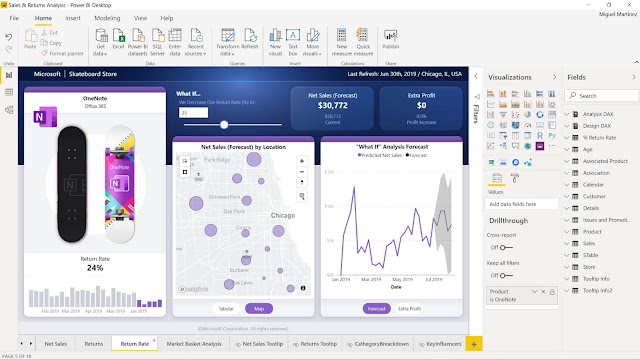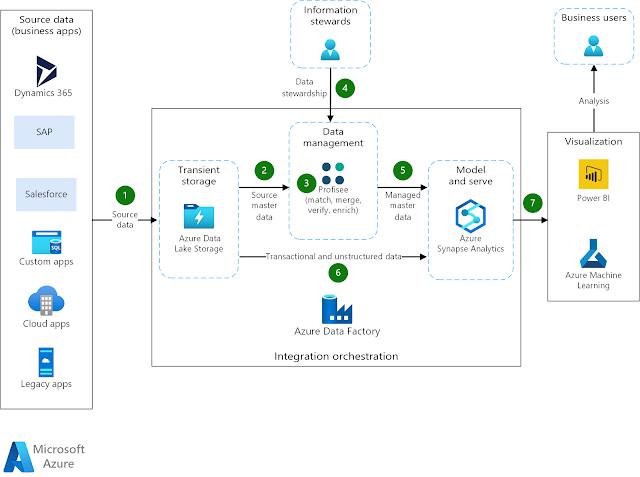Introduction:
In today's world, we generate an unprecedented amount of data daily. The rapid growth in data volume, variety, and velocity presents both challenges and opportunities for businesses and organizations across various industries. To harness the power of big data and leverage it for decision-making, uncovering hidden insights, and creating new value, we must explore innovative approaches. One such approach is the exciting realm of human-AI collaboration – a cutting-edge synergy between human creativity and artificial intelligence that helps unlock the full potential of big data.
In this blog post, we will delve deeper into the concept of human-AI collaboration in big data analytics, discuss the benefits and challenges, and explore real-world examples that showcase the transformative power of this collaboration.
The Concept of Human-AI Collaboration:
Human-AI collaboration refers to the integration of human intuition, creativity, and critical thinking with the processing power, pattern recognition, and predictive capabilities of artificial intelligence systems. By combining the strengths of both human experts and AI, we can tackle complex big data problems more effectively and efficiently.
Benefits of Human-AI Collaboration in Big Data Analytics:
Enhanced Decision-Making: AI can process vast amounts of data quickly and accurately, identifying patterns and trends that may be missed by human analysts. When human experts and AI work together, they can make more informed decisions based on comprehensive data analysis.
Improved Efficiency: AI-powered tools can automate repetitive tasks, freeing up human analysts to focus on higher-level tasks that require human insight and creativity. This collaboration allows organizations to optimize their resources and increase productivity.
Innovation and Creativity: The combination of human intuition and AI-generated insights can spark new ideas, leading to the development of innovative solutions and products that drive competitive advantage.
Personalization: AI can analyze large datasets to identify individual preferences and patterns, enabling the creation of personalized experiences, products, and services tailored to each customer's needs.
Challenges of Human-AI Collaboration:
Data Privacy and Security: The massive scale of big data can raise concerns about data privacy and security. Ensuring the responsible handling of sensitive information is crucial when implementing human-AI collaboration.
Bias and Fairness: AI systems can inherit biases from the data they are trained on, leading to unfair or discriminatory outcomes. It is essential to monitor AI systems for bias and develop strategies to mitigate potential negative impacts.
Skill Gap and Training: Human experts must possess the necessary skills and knowledge to collaborate effectively with AI systems. Organizations must invest in training and upskilling their workforce to adapt to the new paradigm of human-AI collaboration.
Real-World Examples of Human-AI Collaboration in Big Data Analytics:
Healthcare: Combining the expertise of medical professionals with AI-powered diagnostics can help identify diseases and treatment options more accurately and quickly, improving patient outcomes.
Finance: In the financial sector, human-AI collaboration can enhance fraud detection, risk management, and investment strategies by analyzing vast amounts of transactional data and market trends.
Supply Chain Management: AI can optimize logistics and inventory management by processing real-time data on consumer demand, transportation, and other factors. Human experts can then make informed decisions, ensuring efficient supply chain operations.
Conclusion:
Human-AI collaboration offers a promising solution to the challenges and opportunities presented by big data. By combining the strengths of human ingenuity and artificial intelligence, we can unlock new frontiers in data analytics and create transformative solutions across industries. As we move forward, it is essential to address the challenges associated with this collaboration and invest in training and education to prepare the workforce for the future of big data analytics.
By embracing the power of human-AI collaboration, we can usher in a new era of innovation, efficiency, and growth, transforming industries and creating a more connected, data-driven world.
As we continue to explore the potential of human-AI collaboration in big data analytics, it is crucial to remain mindful of ethical considerations, such as privacy, fairness, and transparency. Establishing best practices, guidelines, and regulations will ensure that the benefits of this collaboration are realized without compromising the rights and well-being of individuals and society.
Moreover, fostering a culture of continuous learning and skill development is essential for organizations to stay competitive in the ever-evolving landscape of big data and AI. By investing in employee training, organizations can equip their workforce with the tools and knowledge necessary to harness the full potential of human-AI collaboration.
Lastly, interdisciplinary research and collaboration between academia, industry, and policymakers will be vital in advancing our understanding of human-AI collaboration and addressing the challenges it presents. By working together, we can pave the way for a future where the synergy between human expertise and artificial intelligence enables us to uncover insights, solve complex problems, and drive innovation like never before.
In conclusion, human-AI collaboration represents a new frontier in big data analytics that holds immense promise for transforming industries and enhancing our ability to make data-driven decisions. By addressing the challenges associated with this collaboration and fostering a culture of learning, innovation, and ethical responsibility, we can ensure that the benefits of human-AI collaboration are realized to their fullest potential, creating a brighter future for all.



























